Is Bone Marrow Transplant 100% Successful?
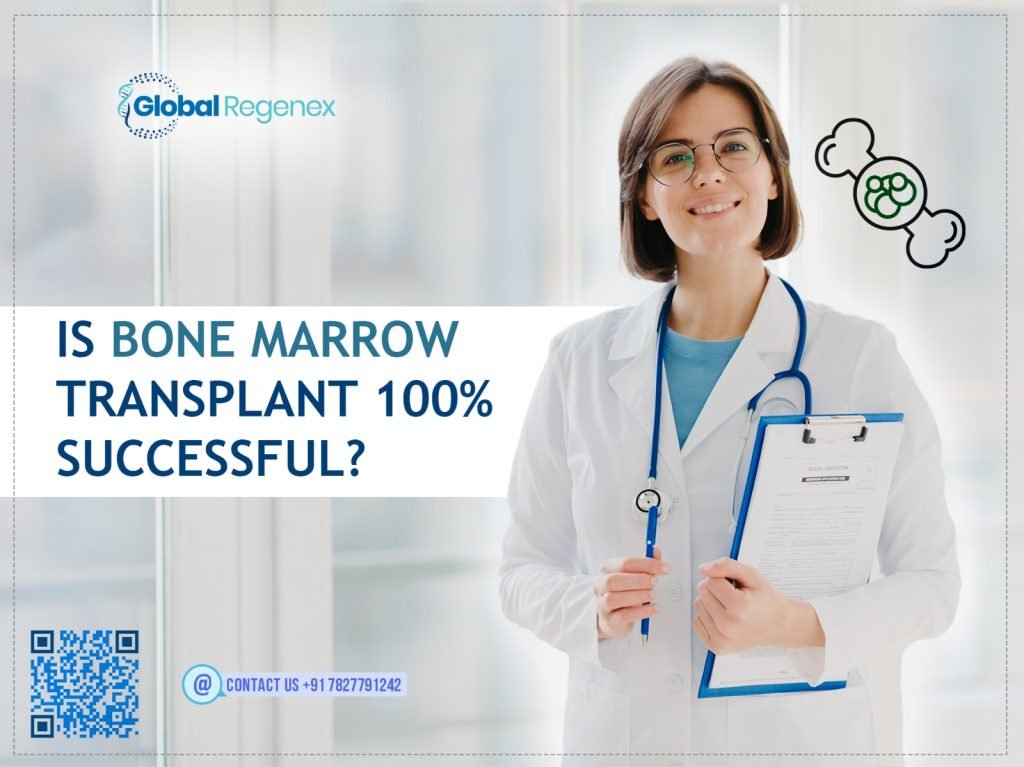
It is a rescue therapy for some of the critical conditions that may be proving fatal, such as leukemia and lymphoma. However, a bone marrow transplant is not fully guaranteed and successful in every case. A lot of factors determine the success rate, and each case is different. It is a very important step to understand these factors before the actual procedure is initiated. What is Bone Marrow Transplant? A bone marrow transplant is a surgical operation in which one’s defective or unhealthy bone marrow is replaced by healthy cells. This is generally found in the hip and thigh bones because it helps produce blood cells around them. These cells may include red cells to help in the transport of oxygen around the body, white cells in fighting infections, and platelets for clotting which helps the body produce more healthy cells naturally again. Types of Bone Marrow Transplants There are two main categories of bone marrow transplants: Autologous Transplant This is the process by which the patient’s healthy bone marrow cells are harvested, prepared, and then re-infused back into the patient’s body after the destruction of the patient’s diseased bone marrow through chemotherapy or radiation. Allogeneic Transplant It employs bone marrow from a bone marrow transplant donor. The donor can either be a family member or an unrelated donor who has bone marrow that is a close match with the recipient. Different types of transplants have their respective rates of risk and success, which we will discuss while going along. Factors Affecting Bone Marrow Transplant Success There are several factors that influence whether a bone marrow transplant is successful or not. The success rate depends on the following: Condition Being Treated The success rate is decided mainly by the type of disease being treated. Thus, although the success rate may be greater for certain types of leukemia than for others, advanced stages of the disease or other grave conditions will have other success rates. In general, there will be better prospects for effectiveness at earlier interventions. Age of the Patient Younger patients have better bone marrow transplants. This is because such patients are healthier. Thus, they have a better immune system and can respond more positively to the bone marrow transplant process. Patient’s Health Overall health is highly significant in any transplant procedure. A patient, with otherwise good health apart from the bone marrow disease, has a high chance of recovery better than a patient with other assorted conditions. Bone Marrow Donor Matching Success in an allogeneic transplant is found in locating a bone marrow transplant donor. The closer the tissue match between the donor’s tissue and the patient’s tissue, the more likely a successful transplant will be. Family members, especially siblings, are the preferred donors for many people because statistically, they have much higher chances of matching up. Still, a good match is sometimes attained through international bone marrow registries. Post-Transplant Care Post-transplanted patients should be monitored closely to receive appropriate follow-up care and treatments to avoid complications, such as infections and graft-versus-host disease-this is the reaction of donor immune cells against the recipient’s body and other adverse effects, hence reducing the success rate of the transplant procedure. Close follow-up care can minimize these complications and greatly increase the chance of success. Putting All Together There’s certainly hope for bone marrow transplantation in severe diseases, although it is yet to be 100% successful in all cases. Hopes for success in the procedure would lie in numerous factors, such as the age and health of the patient, among others, and the match of the bone marrow transplant donor. Although not completely risk-free, most patients do experience successful treatments if treated by the right physicians. Experts would be able to guide you through the complexities of bone marrow transplantation and improve your chances for recovery at Global Regenex.
Immune Cell Therapy for Parkinson’s Disease
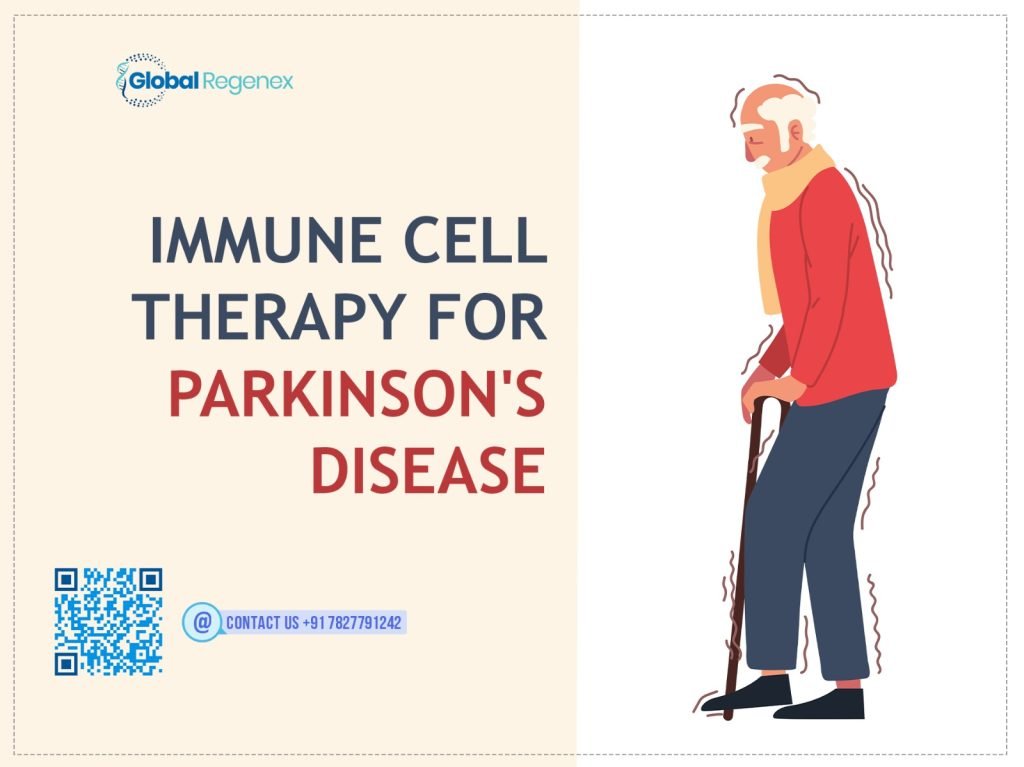
This is actually a progressive neurological disease leading to movement effects, causing tremors and stiffness. Parkinson’s disease has no cure, but there are new treatments that could be very promising, especially in the form of immune cell therapy. Global Regenex is here to provide consultancy tailored to your needs with an elite guide on this new type of treatment. What is Parkinson’s Disease? Due to the loss of some neurons, which reportedly are associated with the neurotransmitter dopamine, Parkinson’s disease results in the loss of dopamine, which helps in the facilitation of movements. It leads to decaying motor functions due to the absence of it, and its most apparent symptoms include: Tremors of the hands Slowing down of movements, commonly known as bradykinesia Rigidity of muscles Poor posture and balance Change in speech Problem with involuntary movements such as blinking Though there is no clear understanding of the actual cause of Parkinson’s disease, most researchers still firmly believe that genetic factors as well as environmental factors cause the disease. Current Treatments for Parkinson’s Disease The current treatment for Parkinson’s disease is mainly the management of its symptoms and not a cure for the illness. The most effective treatments are those enumerated below Medical Treatment: This incorporates drugs with levodopa, which increases dopamine levels in the brain, helping to improve movements and control symptoms. Physical Therapy: It helps patients preserve strength and flexibility in their muscles. Surgery: DBS in advanced patients. Electrodes placed in parts of the brain will improve motor functions. These treatments manage the symptoms without touching the cause of the disease. A new, innovative method that is offered as the new hope is immune cell therapy. What is Immune Cell Therapy? The strategy is immune cell therapy, by which your body’s own immune cells may fight disease. Specifically for Parkinson’s disease, this therapy plans to stimulate the immune system to recognize and repair damaged brain cells. There is a concept here to train immune cells to attack the inflammation and oxidative stress responsible for degenerating dopamine-producing neurons. It can stop or even slow the advancement of Parkinson’s disease, which is why it can be considered to be a revolutionary development for treatments concerning Parkinson’s disease. How Immune Cell Therapy Works? Immune cell therapy typically involves the harvesting of immune cells from either the patient’s bloodstream or bone marrow and in the laboratory enhances them or alters them to better function to be returned to the patient. How it would work in Parkinson’s disease: Cell Collection: This collection contains, of course, patient immune cells that are essentially T-cells or white blood cells taken from the patient’s blood or bone marrow. Cell Modification: These cells are engineered or activated to target the damaged areas of the patient’s brain, especially where the neurons that produce dopamine are dying. Cell Infusion: The modified immune cells are then infused again into the patient’s body and migrate to the brain to repair or regenerate the damaged neurons. The focus of immune cell therapy is more specific in targeting the cause of neuronal damage, which might be a much more effective treatment than general ones. Why Immune Cell Therapy is a Game Changer? Focused Therapy: Unlike “general drugs” that influence the whole brain, immune cell therapy targets damaged areas in particular. Slowing Disease Progression: Although there is no solitary treatment that has the ability to reverse the diseases, the concept of immunity cell therapy was developed to either take or almost stop the progression of the diseases. Potential for Regeneration: There may be a possibility that this therapy holds the potential for regenerating damaged neurons hence restoring most of the lost functions in patients. Lesser Side Effects: Since immune cell therapy involves the usage of the body’s own cells, the risk associated with such synthetic drugs is lesser. Personalized Therapy: There are different immune cells found in every patient. This is a personalized treatment, therefore, it can fit an individual’s requirements. The Concluding Thoughts Immune cell therapy offers fresh hopes in the management of Parkinson’s disease, which has long been regarded as a challenging condition for treatment. The therapy directly deals with the cause of the disease, so its application may be believed to slow down the progression of the disease itself and even regain some of the lost functions. Since the research continues, immune cell therapy dramatically can change the approach by treating the conditions of Parkinson’s disease. If you are looking for immune cell therapy for Parkinson’s disease treatments, Global Regenex is your guide to this promising space. With the backing of professionals, we help you make a judgment call whether this is the right thing for your journey toward more health.
What Is The Success Rate Of Immunotherapy?
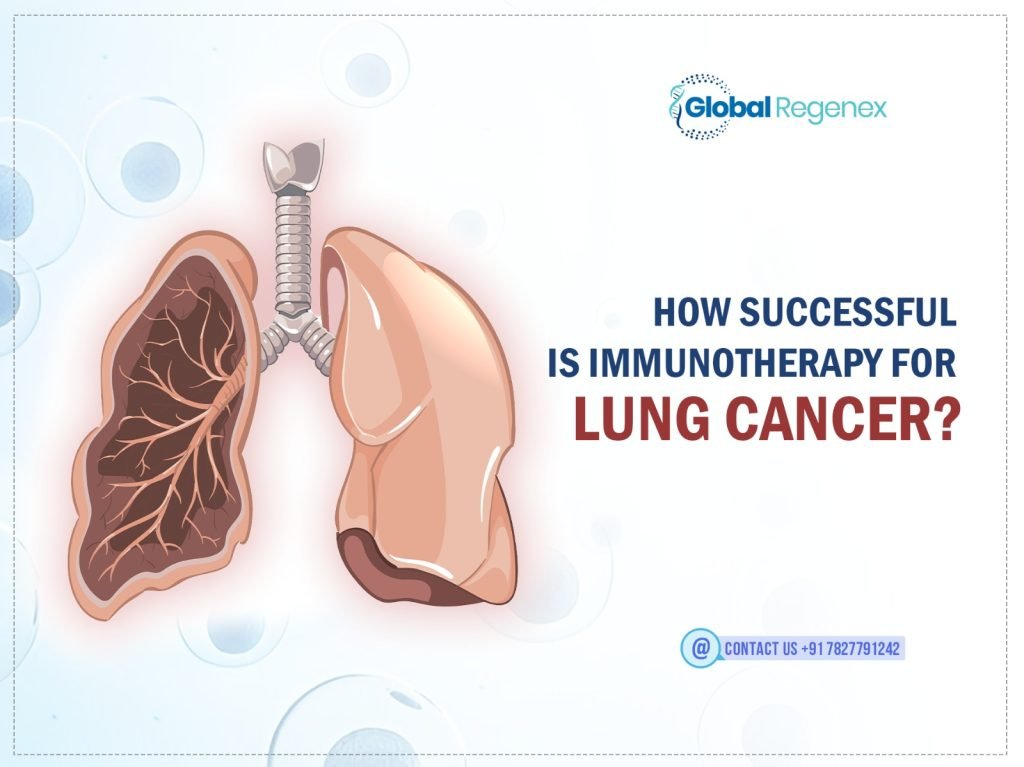
A novel kind of cancer treatment, immunotherapy once again gives hope for many different types of disease. In the realm of cancer treatment, immunotherapy emphasizes simplicity and efficiency. New criteria in this area follow. Acting as a precise instrument in medicine, immunotherapy shows excellent outcomes in treating advanced tumors and offers long-lasting effects. Although individual health, cancer kind, stage, and age may all affect precise success rates, immunotherapy usually shows a good record; the average success rate of cancer patients to immunotherapy medications falls between 20 and 50%. This figure emphasizes the significant influence of immunotherapy in raising hope among medical experts, patients, and caregivers equally. Using the body’s immune system to target and kill cancer cells, this creative technique provides a fresh path for therapy. It has the possibility of continuous remission and a better quality of life. It represents a significant turning point in the continuous fight against cancer as it shows the strength of perseverance and development in changing the scene of cancer treatment. Using immunotherapy, we are entering a transforming age in which the limits of possible cancer treatment are constantly being redefined. These advances have brought fresh options and optimism for people living with this illness. Knowing Immunotherapy to Treat Cancer One cancer treatment called immunotherapy lets your body fight cancer cells by arming its immune system. This vital defense system naturally battles infections and illnesses by comprising lymphatic organs and white blood cells. It belongs to biological treatment, which aims at treating cancer by using compounds derived from live entities. Immunotherapy provides a focused method in the battle against cancer by using the body’s natural capacity for defense. Emphasizing natural processes to improve treatment results and raise patients’ general well-being offers a hopeful path in cancer therapy. How Is Lung Cancer Immunotherapy Working? Cancer cells are targeted and attacked by your immune system. However, cancer cells present particular difficulties. They might be challenging to find as they seem like healthy cells. They also often increase and spread rapidly. Immunotherapy may support the capacity of your immune system to combat cancer cells. The Food and Drug Administration (FDA) has just authorized several newly developed immunotherapy medications presently on the market. Everyone has different factors, so it’s advisable to go over these choices with your healthcare staff to choose what would be best for you. Cancer Immunotherapy Has What Success Rate? Apart from pharmaceutical firms’ developed immunotherapy medications, there are various creative approaches to cancer immunotherapy. Some of these approaches may be administered as compassionate experimental treatments for patients with minimal or nearly zero prospects with conventional therapy. Immunotherapy has excellent promise because we usually deal with very aggressive cancers resistant to traditional therapies. For instance, on average, 30% of stage IV cancer patients undergoing immunotherapy at Biotherapy International report a decrease in tumor size, stop of growth, or even complete remission. Types of Immunotherapy Targeting different immune system pathways, many forms of immunotherapies boost anti-tumor responses. Cancer cells use disrupting inhibitory signals to hide from immune detection; checkpoint inhibitors like pembrolizumab and nivolumab help. With CAR-T cell therapy, a patient’s immune cells are genetically altered to identify and target cancer cells. Cytokine treatment increases immune responses against cancer by use of immune-stimulating proteins. The kind and stage of cancer, as well as personal patient considerations, determine the immunotherapy decision. Conclusion The effectiveness of immunotherapy depends on many elements. These include personal patient traits, genetic composition, and the kind and stage of cancer. Although immunotherapy has undoubtedly changed the field of cancer treatment, it is essential to understand that its effectiveness will differ across individuals. Understanding these contributing elements’ subtleties helps doctors customize their treatment plans to maximize results for every patient. Furthermore, continuous studies and clinical trials show great potential to improve the efficacy of immunotherapy and increase its use across many cancer types.
What Is The Success Rate Of Autologous Bone Marrow Transplant In India?
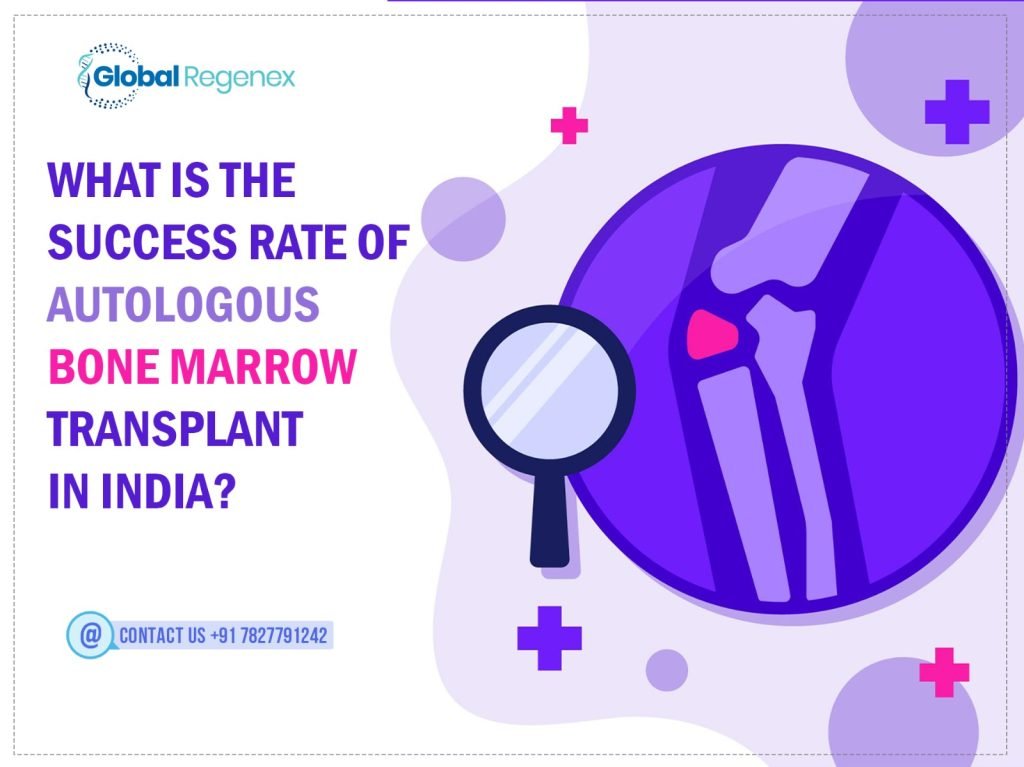
One especially used kind of therapy for cancer and other ailments is bone marrow transplant. It also addresses abnormalities of blood cells, including red and white ones. The kind of bone marrow transplant determines its success rate generally; every type has distinct success rates. Let’s go into great depth on the many forms of bone marrow transplants and related success rates. What is a transplant of bone marrow? The fundamental component of a bone is its marrow. Its sponginess generates blood cells. Healthy bone marrow takes place when the bone marrow replacement produces damaged blood cells. This therapy aims to restore normal physiological functioning, otherwise aberrant owing to damaged bone marrow cells. Bone Marrow Transplant Success Ratios There are three main salient features of the BMT success rates: Bone marrow transplants are more successful for individuals with disorders other than cancer than for those with current malignancy. Patients with some other illness than cancer have 75% to 90% success rates when close relatives are involved. Genetically similar but not near cousin has a success rate ranging from 40% to 68%. Should the malignancy be in the acute stage, bone marrow transplants have success rates ranging from 60% to 70% for a close relative and from 30% to 50% for unrelated donors. Bone marrow transplants have less success rates in the advanced stage of the illness or cancer in the chronic phases. Younger patients have more successful rates than older ones. Because of highly qualified surgeons and modern techniques used in the operation, bone marrow transplantation success rates in India are very high. Success Rate Various Bone Marrow Transplant Types Every form of bone marrow transplant has different success rates; hence, before having a bone marrow transplant, you should be fully aware of all the many kinds and their success rates. An allogenic bone marrow transplant with an unrelated donor has success rates ranging from 36% to 65%. Considered high success rates, the success rates of autologous bone marrow transplants are between 50% to 80%. Elements influencing the success rates of bone marrow transplants The overall health of a patient and the availability of a close family member to contribute stem cells determine the bone marrow transplant outcome, among other factors. The following describes some of the main determinants of the success rates of bone marrow transplants: Patient’s Age Reverses-host disease (GVHD) response A patient’s overall state of health prior to the illness Other medical disorders are present here. Bone marrow transplant type—autologous or allogeneic? Techniques of infection control Life after Bone Marrow Transplant Following a bone marrow transplant, the patient’s life differs from that of a typical patient for some period. The injected stem cells generate fresh blood cells two to three weeks after a bone marrow transplant. By now, you can be released with instructions for follow-up with your surgeon. For at least three months, you will be visiting the clinic for follow-ups. This is essential to track any consequences, including infections, electrolyte abnormalities, dehydration, allogeneic transplants, and graft-versus-host disease. Your doctor may run many tests and physical examinations during these follow-ups. He could also help you control the difficulties by means of drugs and lifestyle changes. Those who have lived beyond five years after a bone marrow transplant without illness recurrence have a great probability of lasting another 15 years. Though life expectancy does not revert to normal, bone marrow success rates are high. Conclusion Bone marrow transplants have extremely high success rates in India when surgeons apply cutting-edge technology with outstanding expertise and skill sets. Nonetheless, the type of transplant and the patient’s age and condition determine the BMT success rate in India, among other factors. Following a bone marrow transplant, life expectancy has risen recently. Months to even years might pass during recovery after a bone marrow transplant.
What Is Stem Cell Therapy Used For?
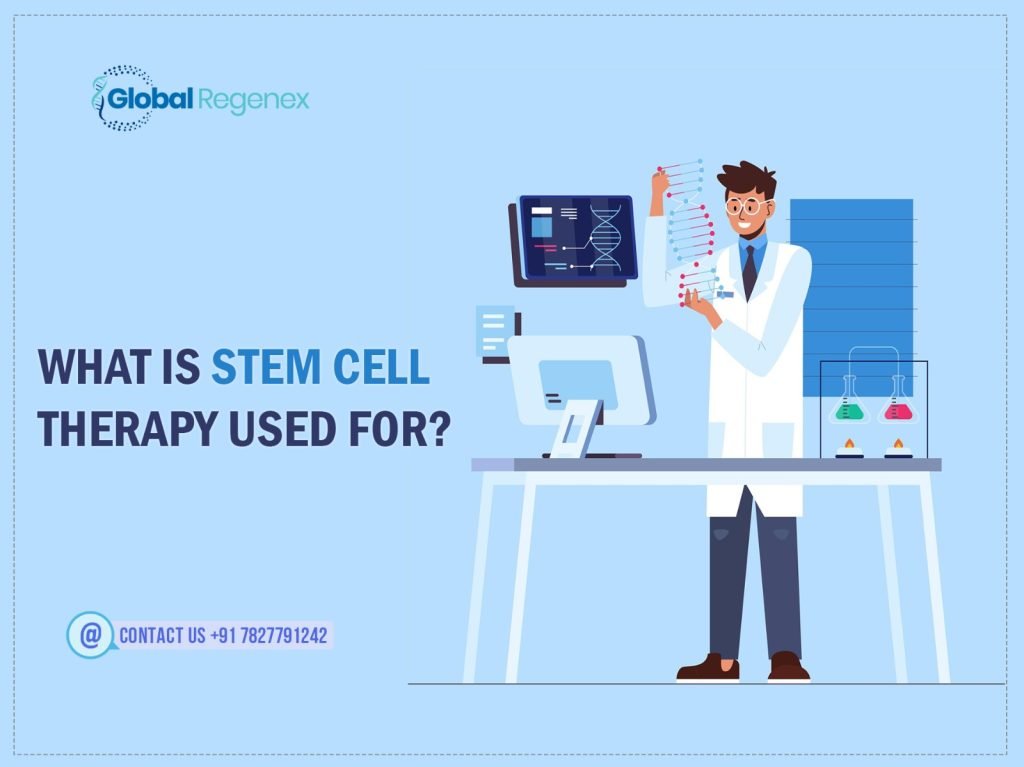
One unique kind of cell with two crucial characteristics is stem cells. They can produce additional cells just like themselves. That is to say, they self-renew. They may undergo a differentiation process to transform into other cells for various purposes. Nearly every tissue in the body has stem cells. They are also required for tissue upkeep and healing after damage. Where the stem cells are determines whether they grow into specific tissues. Hemopoietic stem cells, for instance, live in the bone marrow and can generate every kind of cell needed in blood. Stem cells may also develop brain cells, heart muscle cells, bone cells, or other cells. Stem cells come in many forms. Since they may grow into any cell of the growing fetus, embryonic stem cells are the most flexible of all. Most stem cells in the body may only assist in preserving and healing the tissues and organs they live in; they have little capacity to produce new cells. Why Stem Cells Are So Much Sought After? Researchers are investigating stem cells to discover if they might: Clarify the causes of illnesses. Observing stem cells grow into cells in bones, heart muscle, neurons, other organs, and tissue helps scientists better grasp the evolution of diseases and ailments. Those with leukemia, Hodgkin disease, non-Hodgkin lymphoma, and various solid tumor malignancies might all benefit from stem cell treatments. Stem cell treatments may also help those with hereditary metabolic disorders, immunodeficiencies, and aplastic anemia. Growing to create new tissue for use in transplant and regenerative medicine, stem cells might prove to be invaluable. Stem cells and their uses in transplant and regenerative medicine are still under research, and information on them is constantly developing. Check new medications for efficacy and safety. Researchers may evaluate certain kinds of stem cells for safety and quality before introducing medicines in development to humans. This testing may assist in assessing medications in development for cardiac toxicity. Novel research fields include testing novel medications utilizing human stem cells programmed into tissue-specific cells. New drug testing must be precise; hence, the cells must be engineered to acquire traits of the kind of cells the medication targets. Research on methods to train cells into certain types is in progress. Where Do Stem Cells Originate? Stem cells come from various sources: Stem cells for embryons. Three to five-day-old embryos provide these stem cells. An embryo at this stage is known as a blastocyst and boasts around 150 cells. These are pluripotent, or ploo-RIP-uh-tunt, stem cells—that is, those that may either develop any cell in the body or divide into new stem cells. This allows organs and damaged tissue to be rebuilt or repaired from embryonic stem cells. Adult cells are transformed to possess traits of embryonic stem cells. Genetic reprogramming has let scientists convert ordinary adult cells into stem cells. Researchers can create adult cells acting like embryonic stem cells by changing their DNA. Indinduced pluripotent stem cells (iPSCs) are these cells. This innovative method could avoid immune system rejection of the new stem cells and enable the use of reprogrammed cells instead of embryonic stem cells. In the meantime, scientists are unsure if employing modified adult cells would have negative consequences for people. Regular connective tissue cells have been taken by researchers and reprogrammed to become working heart cells. Studies on animals with heart failure implanted with fresh heart cells found improved heart function and survival times. Stem cells are generated from birth. Researchers have found stem cells in amnionic fluid along with umbilical cord blood. Stem cells may develop into specialized cells. Surrounding and shielding a growing baby in the uterus, amniotic fluid fills the sac. Stem cells have been found in amniotic fluid samples taken from pregnant women for research or therapy under a process known as amniocentesis. Why Is The Use Of Embryonic Stem Cells Controversial? Taken from early-stage embryos—a collection of cells created when eggs are combined with sperm at an in vitro fertilization clinic—embryonic stem cells are Since human embryonic stem cells are derived from human embryos, various ethical concerns have been raised about the direction of embryonic stem cell research. 2009 saw the National Institutes of Health establish policies for human stem cell research. The guidelines specify embryonic stem cells and their possible use in research and suggestions for embryonic stem cell donations. Conclusion Because cloned cells are less likely to be rejected once transplanted back into the donor, some researchers think stem cells obtained via therapeutic cloning may have advantages over those from fertilized eggs. It might also enable scientists to see precisely how a condition arises.
What Diseases Are Treat By Stem Cells?
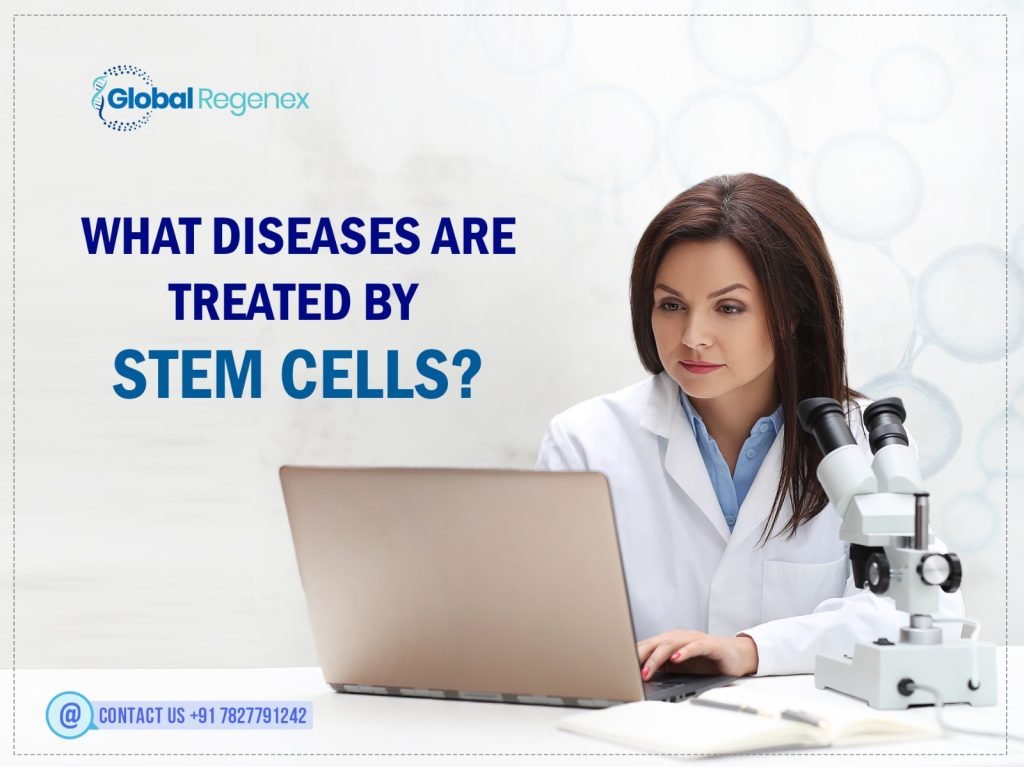
The only other cells in your body that produce many cell types—blood, bone, muscle, etc.—are stem cells. They also repair damaged tissue. Stem cells are now fundamental therapy for blood cancer and other blood disorders. According to medical experts, stem cells can also cure many different disorders. Advantages of stem cell treatment Management of long-term, chronic diseases, including those causing pain and other symptoms, may benefit much from stem cell treatment. Although treatment may be used independently, it is usually combined with other therapies for best results. Stem cell treatment might be helpful in eight situations below: Arthritis: The inflammatory disorder known as arthritis compromises our joints. Repairing damaged joint cartilage and lowering inflammation in and around the joint may both benefit from stem cell treatment. Cancer Leukemia and lymphoma may be treated by stem cell transplants, which replace diseased cells. Parkinson’s Disease Repairing nerve damage caused by Parkinson’s disease using stem cells might help replenish dopamine-producing brain cells lost by the illness, according to a new study. Cardiac Disease individuals with heart attacks, heart failure, and even individuals with big and small vessel disease are benefiting from cardiac regeneration accomplished with stem cell treatment. In both cases, treatment aims to let the stem cells fix and replace damaged tissue in the blood arteries and the heart. Several Sclerosis Studies reveal stem cells may go straight to brain lesions and enhance brain cell health; they are also being utilized in repairing neurological damage resulting from MS. Stem cells also play a significant role in MS by helping to regulate aberrant immune system activity. Diabetic Special cells in the pancreas that generate insulin stem cells might help replace lost or injured beta cells. Problems with beta cells define both type 1 and type 2 diabetes; either there are insufficient — or none — beta cells, or the cells do not operate as they should. Patients of any kind may benefit from stem cell treatment. Fibromyalgia in particular Stem cells may be beneficial in controlling inflammatory reactions, including inflammation linked with fibromyalgia. They may also assist in repairing and rejuvenating damaged nerve cells that might “misfire,” producing pain signals in response to a lack of painful stimuli. Kidney Ailment Stem cells are being utilized to treat acute and chronic kidney damage and kidney disease, as they can change into many different cells, including renal tissue. The aim is to replace cells lost previously from tissue damage and damaged cells. How Do Stem Cells Treat Illnesses: Benefits of Stem Cell Therapy Stem cell treatments may use allogeneic (donor-derived) or autologous (patient-own cells). Every method has main benefits, like: The unique regenerative capacity of stem cells allows them to replace damaged cells and tissues and develop into many cell types. Driven by several origins within the body, stem cells have different benefits and uses that help to encourage variety in treatment choices. Since autologous stem cell treatment employs the patient’s stem cells, it reduces the chance of immunological rejection. Customized based on requirements and situations, stem cell therapy is a treatment that makes more effective treatment possible. Using minimally invasive techniques, stem cells help lower the dangers of invasive operations and provide extended recovery periods. Previously thought untreatable, neurological, and autoimmune illnesses may be treated using stem cells. Stem cell treatment helps to modify diseases by targeting the ailment’s fundamental cause instead of treating symptoms. Conclusion Research into how stem cells could be utilized to cure illnesses is abound. Stem cell treatments are projected to be developed for many diseases for which there are no current efficient treatments in the future.
How Successful Is Immunotherapy For Lung Cancer?
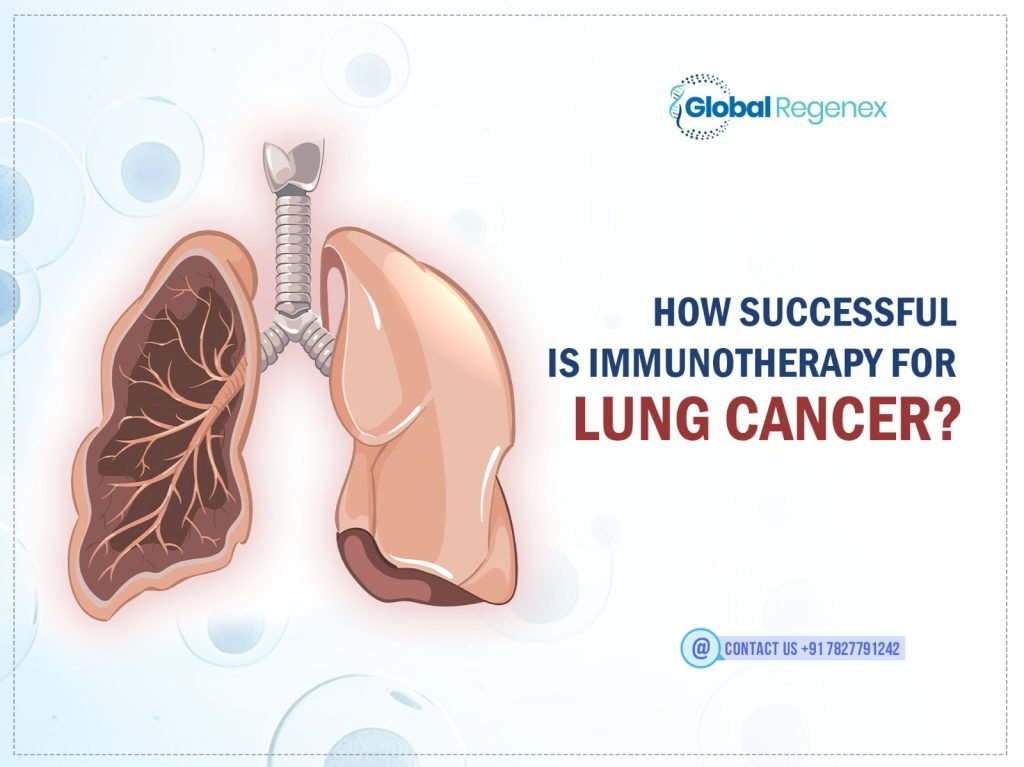
For those battling lung cancer, immunotherapy—alone or in concert with traditional treatments—can greatly enhance results. Lung cancer, the most often occurring cancer globally, affects around 2.1 million people annually and ranks first among cancer-related fatalities for men and women. Along with 130,000 fatalities in 2023, the United States alone is expected to have 240,000 new lung cancer cases. Every year, lung cancer takes more lives than cancer of the breast, prostate, and colon taken together. Treatment Alternatives for Lung Cancer Until recently, radiation, chemotherapy, and surgery were the accepted treatments for lung cancer. Although they greatly increase longevity and provide symptom relief, most lung cancer patients are diagnosed with advanced illness (stage 3b/4). Hence, these therapies are unlikely to cause complete cures. The U.S. FDA authorized the first immunotherapy to treat a subgroup of lung cancer patients in 2015. Immunotherapy is a kind of treatment meant to assist a person’s immune system in either eradicating or regulating cancer. Recent clinical studies treating patients with immunotherapy, either alone or in combination with other treatments, have shown notable patient improvement, leading to FDA approval of many other immunotherapy options for more lung cancer patients, including approvals to treat patients with immunotherapy as a first-line therapy instead of conventional treatments. Focused Antibodies Approved for subsets of people with non–small cell lung cancer (NSCLC), amivantam (RybrevantTM) is a bispecific antibody targeting EGFR and MET receptors on tumor cells. Approved for subsets of patients with advanced non-small cell lung cancer (NSCLC), including as a first-line treatment, bevacizumab (Avastin®) is a monoclonal antibody targeting the VEGF/VEGFR pathway and suppresses tumor blood vessel growth. Approved for subsets of individuals with advanced non-small cell lung cancer (NSCLC), including as a first-line treatment, necitumumab (Portrazza®) is a monoclonal antibody targeted targeting the EGFR pathway. Approved for subsets of patients with non-small cell lung cancer (NSCLC), including as a first-line treatment, ramucirumab (Cyramza®) is a monoclonal antibody that targets the VEGF/VEGFR2 pathway and reduces tumor blood vessel development. Approved for subsets of patients with advanced lung cancer, trastuzumab deruxtecan (Enhertu®) is an antibody-drug combination targeted at the HER2 pathway, delivering lethal medicines to tumors. Immunomodulators: Approved for patients with advanced non-small cell lung cancer (NSCLC) and small cell lung cancer (SCLC), including as a first-line treatment in conjunction with chemotherapy, atezolizumab (Tecentriq®) is a checkpoint inhibitor targeted at the PD-1/PD-L1 pathway. Approved for a subgroup of patients with advanced non-small cell lung cancer (NSCLC), cemiplimab (Libtayo®) is a checkpoint inhibitor aiming at targeting the PD-1/PD-L1 pathway. Approved for subgroups of patients with advanced lung cancer with DNA mismatch repair failure (dMMR), dostarlimab (Jemperli) is a checkpoint inhibitor aiming to target the PD-1/PD-L1 pathway. Approved for subsets of patients with lung cancer, including in combination with tremelimumab, durvalumab (Imfinzi®) is a checkpoint inhibitor targeting the PD-1/PD-L1 pathway. Approved, in conjunction with nivolumab, as a first-line treatment, both with or without chemotherapy, for patients with advanced non-small cell lung cancer (NSCLC) and mesothelioma, ipilimumab (Yervoy®) is a checkpoint inhibitor targeted at the CTLA-4 pathway. Approved for patients with advanced non-small cell lung cancer (NSCLC) and mesothelioma in combination with ipilimumab, with or without chemotherapy; also approved for NSCLC in the neoadjuvant (pre-surgical) setting in combination with chemotherapy nivolumab (Opdivo®) targets the PD-1/PD-L1 pathway. Approved for patients with non-small cell lung cancer (NSCLC), including as a first-line treatment, an adjuvant (post-surgery) therapy, or in conjunction with chemotherapy, pembrolizumab (Keytruda®) is a checkpoint inhibitor targeted at the PD-1/PD-L1 pathway. Approved in conjunction with durvalumab and chemotherapy for subgroups of patients with metastatic lung cancer, tremelimumab (Imjudo®) is a checkpoint inhibitor targeted at the CTLA-4 pathway. Combining Immunotherapy And Chemotherapy When advanced SCLC strikes, the checkpoint inhibitors Tecentriq and Imfinzi may be used in conjunction with certain chemotherapy medications as the first treatment—and they can be kept on after chemotherapy as maintenance. Sometimes, Keytruda, Tecentriq, or Libtayo are combined with chemotherapy as the first treatment for advanced NSCLC patients. Chemotherapy may also be used first in conjunction with checkpoint inhibitors Opdivo and Yervoy. Conclusion These medications occasionally cause your immune system to hyperactivate and function too effectively. More severe side effects like inflammation of your lungs, liver, kidneys, thyroid, and pituitary glands, or autoimmune diseases that might compromise an organ or gland could follow from this. Tell your doctor early on of any negative effects. Their chances of worsening are less probable the sooner they are addressed. One of the most hopeful lung cancer treatments available in decades is immunotherapy. Clear evidence comes from the many present and upcoming clinical studies evaluating its efficacy. In their continuous battle against lung cancer, doctors expect it will show to be a useful weapon.
Can you live longer with immunotherapy?

One way your body’s immune system fights cancer is via immunotherapy. Approved for treatment include certain forms of lymphoma, leukaemia, breast cancer, and lung cancer, among other conditions. It might be a choice if you cannot tolerate the side effects of previous therapies or if chemotherapy or another cancer treatment has not worked for you. Immunotherapy might extend your life. If immunotherapy has a strong chance of functioning and won’t likely produce many adverse effects, your doctor will advise. It does not work for everyone, however, and it might produce side effects that are intolerable to you. You are not without alternatives, even if you have tried several therapies. This is a guide on your next steps once immunotherapy fails. Selecting Alternative Therapy Ask your doctor first whether choices are accessible for your cancer. You may test another kind of immunotherapy medicine. Alternatively, you may begin a treatment you haven’t tried. Should it prove that immunotherapy is not suitable for you, the course of treatment you seek next will rely on a few factors, including: Your wellness The kind of cancer you are afflicted with. Other therapies you have experimented with. Side effects from the previous therapies resulted in Radioactive. Radiation. This kills cancer cells or slows their development using high-energy X-rays or other radiation. Either a doctor may implant it within your body close to the cancer, or you can receive it from outside your body equipment. Instead of one large dosage, a treatment known as hyper fractionated radiation therapy offers you two lower doses daily. Ceremonies – This kills or stops the spread of cancer cells using a potent mix of medications. You receive the medication either orally or via a vein. Deliberate treatment – This focuses on elements that enable cancer cells to proliferate and survive. Some medicines stop the impulses that instruct cancer cells on division. Others restrict tumour-feeding blood arteries. Treatment with hormones – This applies to forms of cancer, including prostate and breast tumours that need hormones for growth. Stem cell transplantation – This substitutes healthy, donor-based cells for damaged ones in your bone marrow. It treats malignancies, including multiple myeloma, lymphoma, and leukaemia. Ask your doctor how every new treatment could influence your cancer and how likely it will be to help before you begin it. Please find out the adverse effects it could produce. That will let you decide whether or not you want to attempt it. Palliative Services This choice may assist in controlling all of the physical and psychological aspects of your illness as well as the logistical ones like transportation and health insurance issues. It is accessible at any time after your diagnosis. You get this care either at home or at a cancer centre. Palliative care might consist of diet, physical therapy, relaxation methods, and medication to mitigate the adverse effects of treatment. Counselling and other tools to assist with the despair, worry, and dread of having disease may bring about. Assist with health insurance, employment, and legal concerns resulting from cancer and treatment. Spiritual Direction To Move You Beyond Your Sickness If your doctor suggests palliative care, it does not imply they discount your treatment. It’s yet another approach to reduce your symptoms. Whether they don’t bring it up on their own, find out whether it would make you more at ease. Hotel Car for Hospice Should your cancer have progressed and your therapies prove ineffective, your doctor may advise this. You may have it at your own house, a nursing home, or a hospice facility. Hospice is not a cure or therapy for your cancer. It’s designed to be comfortable for you and assist you and your family manage your illness. Hospice care might comprise: Medicine to reduce your suffering Counselling is Physical treatment Food Therapy using art or music Assistance for your family members. Religious direction Conclusion Tell medical staff about your cancer therapy whether you visit an urgent care or emergency department. The kind of cancer diagnosed was what? You were treated where and when? What kind of immunotherapy and other treatments did you undergo? Ask your primary care physician to include crucial information in your medical records. Tell medical professionals about it should you get unwell. Health applications let you record the data, so you will always have it ready should you need it.
Where Can I Get Immunotherapy in India?
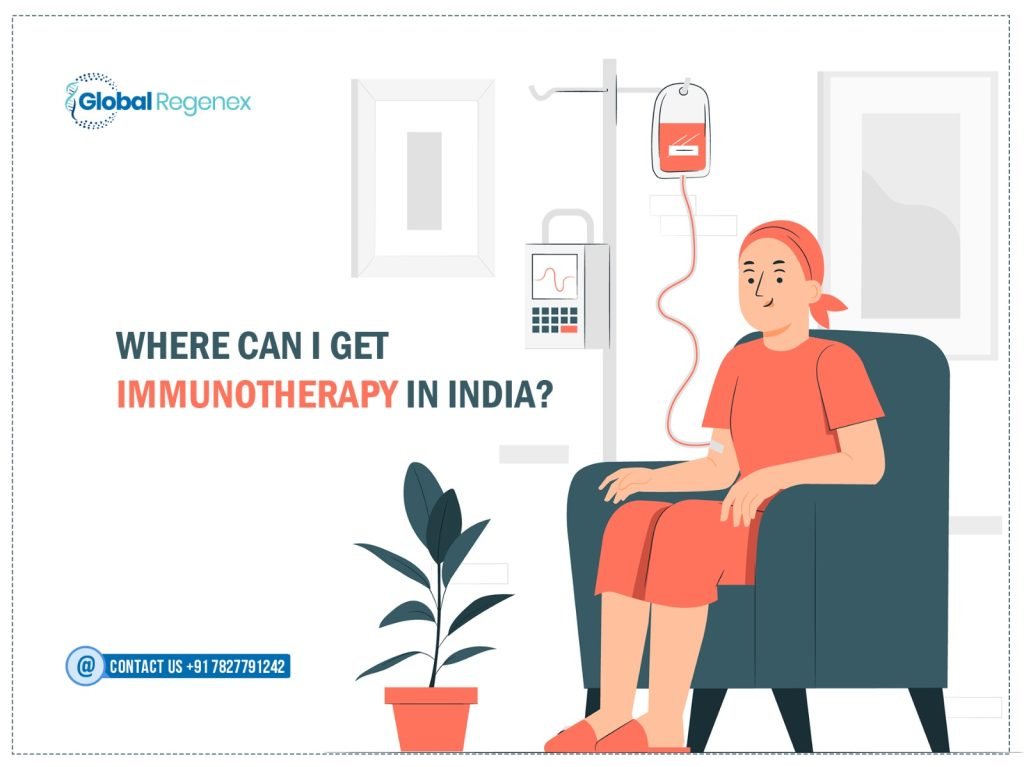
People from all over the world are suffering from various kinds of disease and some of them are chronic. To treat these diseases, doctors and researchers find various treatments but each have their own advantages and disadvantages. One of the most effective treatments that has been used for years is immunotherapy. In this therapy, your body’s own immune system will be trained to fight with different kinds of diseases including cancer. Immunotherapy in India has become a powerful tool in modern medicine and provides several benefits to the patients. It is necessary for all the patients to find a reputed medical centre that provides top-notch cancer immunotherapy. Not all hospitals have the necessary expertise or equipment to provide this advanced treatment. That’s why taking consultation from Global Regenex is a must. We are associated with different top most reputed hospitals and clinics in India to ensure you get a better treatment option. A medical centre that uses advanced facilities and a team of specialists can help you in any condition. You will go through some reputed hospitals and clinics for your immunotherapy with the help of this blog. How Immunotherapy Works? Let’s start with a brief note on what immunotherapy is and its mechanism. With the help of immunotherapy, patients can boost their body’s immune system with various diseases and especially with cancer. Doctors use important substances that are made by the body or in a laboratory. These substances then help to improve or restore immune system function and help it to attack cancer cells more effectively. This treatment can be used alone or combined with other treatments like surgery, radiation, or chemotherapy. There are fewer side effects of immunotherapy treatment in India than conventional treatment which makes it a promising approach. Now, we will show you how immunotherapy works against cancer: Immune System Boosting: Immunotherapy enhances the ability of the immune system to detect and destroy cancer cells. It makes the immune system stronger and more effective. Targeted Therapy: Some immunotherapy treatments specifically target cancer cells, leaving normal cells mostly unharmed. This helps in reducing side effects. Checkpoint Inhibitors: These drugs help the immune system to attack cancer cells by blocking proteins that stop the immune system from working properly. Cancer Vaccines: These vaccines stimulate the immune system to attack specific cancer cells. They can prevent cancer from developing or recurring. Adoptive Cell Transfer: This method involves taking immune cells from the patient, modifying them in the lab to enhance their cancer-fighting properties, and then infusing them back into the patient. Monoclonal Antibodies: These are lab-made proteins that can bind to cancer cells and mark them for destruction by the immune system. They can also block growth signals or deliver toxic substances directly to cancer cells. Top Hospitals In India For Immunotherapy An advanced cancer treatment in India has been formed known as immunotherapy that helps the body’s immune system fight cancer cells. Many top hospitals in India offer excellent immunotherapy services. You will find experienced doctors, modern facilities, and high-quality care in these premiere hospitals. Apollo Hospitals, Tata Memorial Hospital, All India Institute of Medical Sciences (AIIMS), Fortis Healthcare, and Max Super Speciality Hospital are some of the leading institutions in this field. These hospitals are known for their cutting-edge treatments and dedicated healthcare professionals who strive to offer the best possible outcomes for their patients. Apollo Hospitals: Apollo Hospitals is a renowned healthcare institution with multiple branches across India. They offer advanced immunotherapy treatments and have a team of highly skilled oncologists. Tata Memorial Hospital: Located in Mumbai, Tata Memorial Hospital is a leading cancer treatment center in India. They provide comprehensive immunotherapy services and have a strong research focus on cancer treatments. All India Institute of Medical Sciences (AIIMS): AIIMS in New Delhi is one of India’s premier medical institutions. It offers state-of-the-art immunotherapy treatments and is known for its research and teaching excellence. Fortis Healthcare: Fortis Healthcare has a network of hospitals across India. They offer advanced cancer treatments, including immunotherapy, with a patient-centric approach. Max Super Speciality Hospital: Max Super Speciality Hospital, with its various branches, provides top-notch immunotherapy services. They have a team of experienced oncologists and modern medical facilities. Benefits of Immunotherapy In India India’s medical field is evolving day by day because of the discovery of various medical treatments and immunotherapy is one of them. It is becoming more popular because it can be very effective in treating different kinds of cancer. For example, it has shown good results in treating melanoma, lung cancer, and kidney cancer. Immunotherapy can also work when other treatments, like chemotherapy and radiation, do not. It offers hope to many patients who have few other options. There are many benefits of immunotherapy: Targeted Treatment: Immunotherapy specifically targets cancer cells, leaving healthy cells mostly unaffected. This can reduce side effects compared to traditional treatments like chemotherapy. Long-Lasting Effects: The effects of immunotherapy can be long-lasting, as it helps the immune system remember how to fight cancer cells. This can lead to prolonged remission. Versatility: Immunotherapy is effective against various types of cancer and other diseases. It can be used alone or combined with other treatments to improve outcomes. Personalized Medicine: Treatments can be tailored to each patient’s specific type of cancer and genetic makeup, making them more effective. Fewer Side Effects: Since it uses the body’s own immune system, the side effects can be less severe compared to chemotherapy and radiation. Epilogue Immunotherapy is available at many top hospitals and clinics in India. Cities like Delhi, Mumbai, Bangalore, Chennai, and Hyderabad have advanced medical facilities that offer this treatment. Major immunotherapy hospitals in India are AIIMS, Tata Memorial Hospital, Fortis, and Apollo are well-known for their immunotherapy services. Consulting with a qualified healthcare specialist is necessary and that’s the reason Global Regenex is here for you to understand your options. Always check the credentials and reviews of the hospital and doctors to ensure you receive the best care. We hope that you will get the perfect
What Diseases Do Stem Cells Treat?
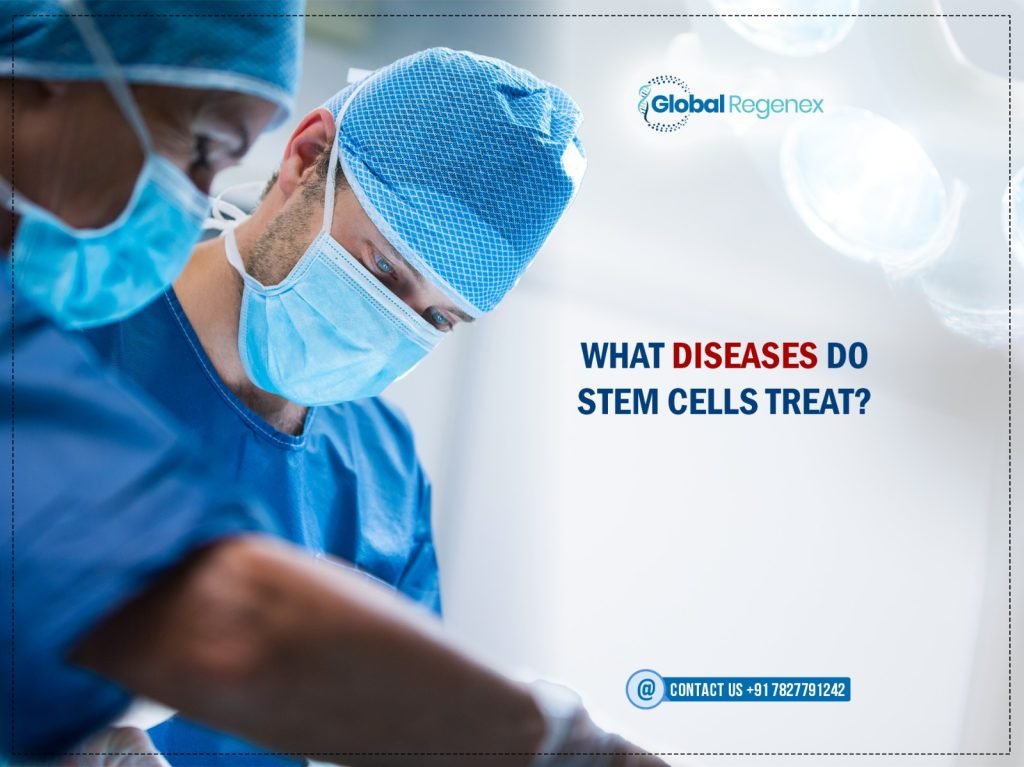
In recent years, chronic diseases are spreading rapidly all over the world and controlling them has become a mission. Chronic diseases are those diseases which can not be treated or cured by any kind of treatment. But, researchers and scientists find a way or we can say a treatment that helps in managing the symptoms of these diseases. Yes, we are talking about stem cell treatment. Stem cell treatment in India has become an optimal choice for every patient who is suffering from such diseases as liver disease, cerebral palsy, male infertility, and many more. Stem cell therapy is a treatment where stem cells are used to help the body heal itself. With the help of this blog, we will provide you with the information about stem cells, diseases that can be treated, and their importance. It will be fun and informative, so stay with the blog till the end. You will know more about the evolution of the medical industry. What Are Stem Cells and Their Properties? Stem cells are those unique that can be found in our body. These cells can be useful in various ways including making regenerative medicine. By using their regenerative properties, many chronic diseases can be managed and also stop the progression. However, these cells are still in their experimental stage but they can treat a large number of diseases. Stem cells are mainly adult stem cells. Adult stem cells are found in various tissues such as bone marrow. Various stem cell therapy centers in India are using these cells to reduce the symptoms of the diseases and provide quality of life to the patients. Stem cells find injured or damaged cells in the patient’s body and replace them with the new ones to provide healing. Now, we will show you some powerful properties of these cells which are: Self-renewal: Stem cells can divide and create more stem cells, which means they can keep making new cells over a long period. Differentiation: Stem cells can transform into specialized cells, like muscle cells, nerve cells, or blood cells, which perform specific functions in the body. Pluripotency: Some stem cells have the ability to become any type of cell in the body, making them highly versatile for medical research and treatment. Multipotency: Adult stem cells can turn into a limited range of cell types, usually related to the tissue they come from, like blood or bone cells. Regenerative potential: Stem cells can repair and replace damaged tissues, which is why they are used in treatments for diseases and injuries. Proliferation: Stem cells can multiply rapidly, producing a large number of cells that can be used for therapies and scientific studies. Different Types of Disease That Can Be Treated With Stem Cells Stem cells are becoming a hope of many patients due to its remarkable results and beneficial properties. These cells have differentiative properties which helps them to differentiate into special types of cells. After that, these special cells attack the damaged part of the body and start the process of healing. Rather than differentiation, stem cells also have anti-inflammatory properties, regenerative properties which makes them an optimal choice for treatment. Here are some diseases that can be treated with stem cells: Osteoarthritis: This is a common joint disease that causes pain and stiffness. Stem cells can help repair the damaged cartilage, reducing pain and improving joint function. Critical Limb Ischemia: This severe condition results from blocked arteries in the legs. Stem cells can promote the growth of new blood vessels, improving blood flow and potentially saving the limb. Crohn’s Disease: This is a chronic inflammatory bowel disease. Stem cell therapy can reduce inflammation and promote healing in the intestines, offering relief from symptoms. Non-healing Diabetic Ulcers: These are sores that do not heal due to diabetes. Stem cells can accelerate the healing process by promoting new tissue growth, reducing the risk of severe complications. Avascular Necrosis: Avascular necrosis occurs when bone tissue dies due to a lack of blood supply. Stem cells can help regenerate the bone tissue, preventing further damage and restoring function. But these are not only the diseases that stem cells treat. There are some other diseases too such as neurological diseases, orthopedic conditions, infertility in male and females, etc. When you go down to the details of these cells you will find some amazing facts about them. Many centers and stem cell therapy hospitals are doing their great best by providing this innovative treatment. Benefits of Stem Cells in Treatment Stem cells have various unique abilities and one of them is restoration and regeneration. These are the abilities which make these cells an optimal choice to use in various treatments. Stem cells can treat a vast number of diseases and help the patient’s body to overcome the symptoms. Overall, stem cells are a powerful tool in the fight against many health problems. Here are some benefits of stem cells that you can experience in your treatment: Repairing Damaged Tissues Stem cells can become the type of cells needed to repair damaged tissues, such as heart muscle after a heart attack. Replacing Lost Cells They can replace cells that are lost due to diseases like diabetes, where insulin-producing cells are destroyed. Treating Genetic Disorders Stem cells can be used to correct genetic defects, offering potential cures for conditions like sickle cell anemia. Testing New Drugs Scientists can use stem cells to test the safety and effectiveness of new drugs without using human subjects. Understanding Diseases Studying stem cells helps scientists learn more about how diseases develop, which can lead to new treatments. Personalized Medicine Stem cells can be used to create personalized treatments for patients, tailoring therapy to the individual’s needs for better outcomes. The Concluding Remarks Stem cells are known as the innovative medical approach because of their successive results and beneficial properties. These cells can restore or replace the old damaged cells with the new ones to stop the progression of the disease and reduce the symptoms. But, it should
